- Learning time
- 60 minutes
- First play time
- 150 minutes
Freedom!
Designed by: Vangelis Bagiartakis
Based on the real-life siege of Messolonghi during the Greek War of Independence, Freedom! sees one player trying to hold the city against the other, who controls the invading forces of the Ottoman empire.
The board shows the walled city and surrounding coastline, with an abstracted ‘surrounding area’ – tiles representing regions that begin favouring either the invaders or insurgents, but may – as we shall see – change sides during the siege. The insurgents start with a small number of units (blue cubes) atop the city wall and on the three nearby islands, and citizens (white cubes) in the city itself. Facing them are the imperial units (red cubes) massed outside the wall. Players are dealt eight cards each from the deck, and then over six rounds each round plays out as follows: during opening the imperial player can shuffle units from their camp (the furthest point from the city) towards the walls, or the islands for a coastal attack. The insurgent player can move one unit reactively. Then the meat of the game takes place, as either side takes turns playing cards: either for their Event – as long as the event is for the side playing it, or for the Action Points on them.
Events are easy: simply do what the card says, usually moving and/or attacking with units using dice and unit strength to resolve results, or swinging political support your way on the aforementioned surrounding regions. If the region favours your own side, add more markers to show support increasing. If the region favours your opponent, you remove markers instead; if there are no markers when you would remove one, the tile flips over and the region now supports you instead!
Instead though, you can (-and sometimes circumstance mean you must) discard a card to spend the action points instead. There is some asymmetry here in how either side operates, but as well as the move/attack/support manoeuvres we’ve already touched on, cannons can be built, Imperial soldiers incentivised with cash (improving their likelihood of victory) Greek civilians can be trained into insurgent units, and the defenders can also go on Raids, sneaking out of the city for guerrilla attacks on enemy combatants. In essence, the invaders have strength in numbers, whilst the defenders a little more tactical flex – and, of course, the wall. Crucial to note here too that during cardplay, if your opponent has discarded a card (for AP) with an event for your side on it, you can discard any card to activate that event.
The imperial side can only win by breaking into the city, and there are two potential routes – via the more circuitous coast, or through the wall itself. Pertinent to that: after both sides have played seven cards each, cannons fire. Here the Imperial forces can do the damage they need to the wall in order to access the city; and insurgents return fire in order to dissuade them! When sections of the wall are damaged, the Imperial forces can enter and fight – but note that they only win the game if present in the city after all cards are played in a given round.
At the end of these two combative phases, there is replenishment. Now the support offered by the nearby regions comes into play, as both sides collect food, more units, cannons and so on. The imperial player must pay their soldiers, and will suffer deserters if they cannot. Both sides must feed their troops and lose morale if they fall short of what they need.
Yes, morale. Both players track the morale of their forces on the board, and it’s important in two ways – establishing turn order (highest morale goes first) but more critical in that if your morale ever hits zero, you instantly lose! Like the Imperialists with their city-invading victory condition though, the insurgents have another way to win: survival. If the imperial forces are unable to make their way into the city by the end of round six, the siege is over: they give up, and the insurgents celebrate. That’s not how it played out back in 1826, but Freedom! gives you the choice to relive history in miniature – or remake it.
There is also a solo variant, bought separately, where a single player can play the Ottomans against an ‘AI’ opponent.
The guru's verdict
-
Take That!
Take That!
It's a war game.
-
Fidget Factor!
Fidget Factor!
Moderate on the first 2-3 plays, dropping to low as familiarity turns the experience from what-are-my-options-again exploration into a feisty back-and-to of force and cunning.
-
Brain Burn!
Brain Burn!
A similar weight for either side: balancing the military (keeping/taking the city) with political (support and supplies) and keeping the enemy from running too much interference.
-
Again Again!
Again Again!
It always begins Once Upon a Time.... but can play out differently on each visit: variety in which side you play, how the cards fall, and how the dice roll, and then what strategy you pursue with the tools you're given.

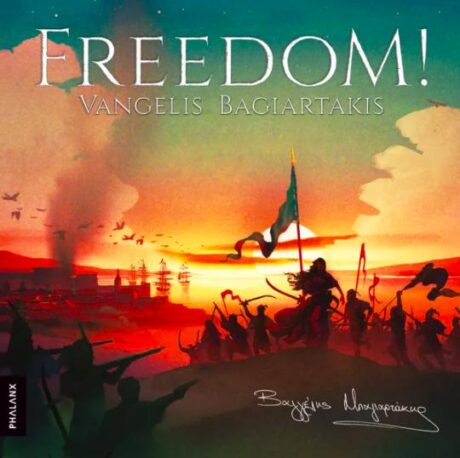
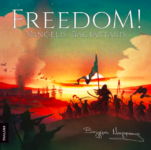

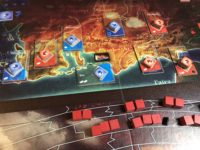
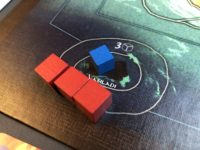
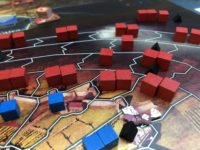
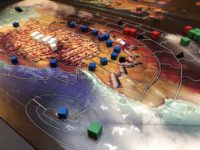
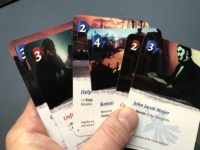


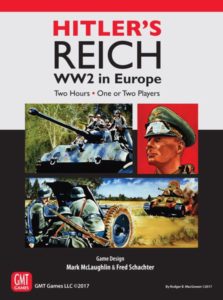
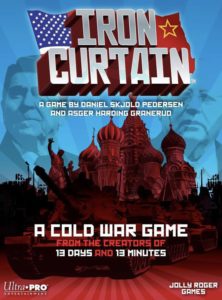

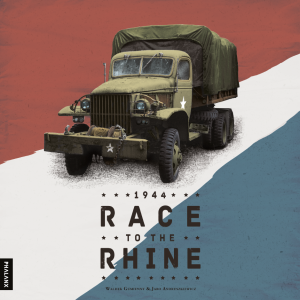

Sam says
A few years ago war games held no interest for me - there seemed to be a grand canyon of difference between the games I enjoyed and the long, intense, rules and reference-heavy experiences that war games offered. Over the last few years many designers though have bridged that gap, creating shorter, more accessible titles that still lean heavily on history but less so on bible-thick rulebooks. This is still a challenge compared to high street titles like Ticket to Ride or Catan, but with just ten pages of rules - much of which is illustrated examples of play - it's a far less intimidating beast than many of the wargames that came before it. Most in fact we've covered here, although we should also mention that after three rounds, things escalate; with a new deck of cards in play and the Ottoman allies arriving (green cubes). Both players also get to petition for support from afar to boost their standing in the game: the insurgents only once; the Imperials as many times as they want to attempt it, though with increasing unlikelihood of success. And within those comparatively-simple rules is a huge amount of tactical manoeuverability - to begin with, the sides are asymmetric with different objectives and different means of reaching them. The imperial player has the most freedom strategically: go combat-heavy, or try to undermine the insurgent cause and force their morale to zero? Attack the wall, or sneak around to the beach? By comparison the insurgents play more reactively, but there are still a number of choices to be made - they too, can focus their efforts on support and try to ensure that the stronger Ottoman forces are constantly fighting against not just the enemy, but depletion. And within the framework of this war is also the fun of play: for all its theme and bleak history, Freedom! is still a game and the combat is dice-driven, with the geography of the location affecting the likelihood of success. Luck is mitigated but not totally absent: a seemingly surefire hit can miss, and long shots can come off. The dice engine doesn't just supply more nuance in what's already a nuanced game - it remembers that whatever their source material, games are (usually!) supposed to be fun. And after just a few plays of Freedom! that's exactly what I've had - it's great.